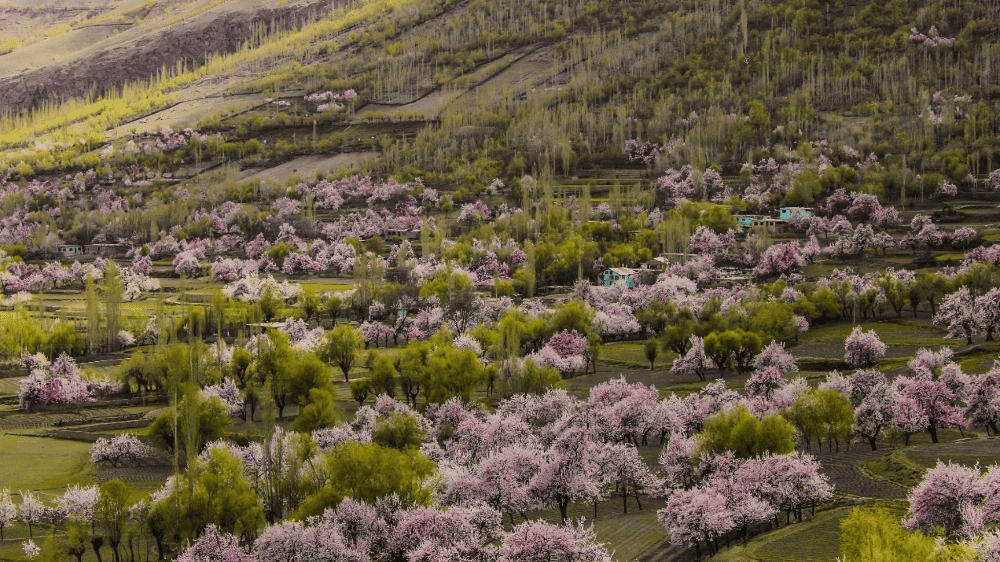Chunda Valley Skardu: Location, Attractions & Travel Guide

Ever wondered where to witness cherry blossoms beneath the Karakoram peaks? Chunda Valley delivers that and more. Nestled roughly 35 km from Skardu at an elevation of about 2,500 m, this scenic valley offers breathtaking mountain vistas, vibrant orchards, and a serene escape—perfect for tourists, explorers, researchers, and national or international visitors seeking both tranquility and adventure.
What You’ll Learn
Location & access details: how to reach Chunda Valley from Skardu
Best times to visit and what the Chunda Valley weather is like
Must-visit spots: spring blossoms, viewpoints, local culture
Step-by-step travel tips and packing suggestions
Real challenge warnings and local stories
Competitor blog tactics to inspire a standout story
Where Is Chunda Valley Located?
Perched 500 m above Skardu town, Chunda Valley sits in Gilgit-Baltistan’s Skardu District. It’s a roughly 1-hour, 10 km drive from the airport via rugged jeep roads (4×4 recommended) or accessible by foot or local transport.
When to Go & What the Weather Is Like
Ideal Season: April–September, with peak cherry blossom splendor from late February to April.
Summer (May-Sept): Pleasant 15–27 °C with low rain; sunny midday, chilly nights.
Winter (Nov–Mar): Harsh, with sub‑zero temps—roads may be impassable.
Bring layers and be prepared for sudden weather changes. The Skardu Valley weather features low rainfall due to the Karakoram barrier, yet brief summer showers are possible.
How to Reach Chunda Valley
Travel Base: Fly into Skardu or drive from Islamabad or Gilgit.
Hire a Jeep: Book a 4×4 from Skardu town or airport.
Journey Overview:
Distance: ~35 km / ~1 hr drive. Expect rocky, hilly roads.
Some taxi/jeep drivers know local shortcuts—ask around.
Foot Trek Option: Optional 20‑minute uphill walk to the “natural calamity shelter” viewpoint.
What to See & Do In Chunda Valley
Spring Blossom & Orchards
Visit in spring to see cherry, apricot, and apple blossoms dazzling the valley. Great for photographers and researchers studying native flora.
Panoramic Viewpoints
Hike to the hillside “shelter” for sweeping views over Skardu, across the Indus and Shigar Rivers.
Local History & Geology
Uncover local folklore: stories of ancient floods preserved in natural rock shelters and anchored boulders—natural “harbors.”
See rock formations resembling animal shapes—dinosaurs, elephants—highlighting geological intrigue.
Cultural Engagement
Walk through mud-village streets and crop fields to meet the hospitable Balti community.
Engage locals, learn their history, and share stories like the “harbor myth” from elders.
Tips & Warnings
⚠️ Challenge Alert:
Road quality: Rough jeep track—choose experienced drivers.
Altitude effects: At 2,500 m, some → mild altitude adjustment is needed.
Limited facilities: No hotels inside the valley; return to Skardu for lodging.
Weather change: Prepare for rain or cold even in summer—pack accordingly.
Step-by-Step Travel Guide
Plan for a 1-day trip with an early departure from Skardu.
Rent a reliable 4×4 jeep.
Drive ~35 km; expect rough terrain.
Hike to viewpoints or explore on foot.
Interact with villagers—bring small gifts like fruit or school supplies.
Return before dusk to ensure safe travel on mountain roads.
FAQs
“When is the best time to visit Chunda Valley?”
→ Spring to early autumn (April–September).
“How do I reach Chunda Valley from Skardu?”
→ Hire a 4×4 jeep; 35 km, ~1 hr via mountain roads.
“Are there hotels in Chunda Valley?”
→ No; return to Skardu for lodging.
Conclusion
Chunda Valley offers a unique blend of alpine beauty, cultural depth, and geological intrigue that few mainstream destinations can match. Whether you’re a tourist, explorer, or researcher, this off-the-beaten-path gem delivers springtime blossoms, dramatic landscapes, and heartfelt local narratives—all within comfortable reach of Skardu.
Call to Action: Comment below with your Chunda travel experiences, or share this post with someone planning their next adventure in Gilgit-Baltistan. Also, subscribe for more insider guides to Northern Pakistan.
